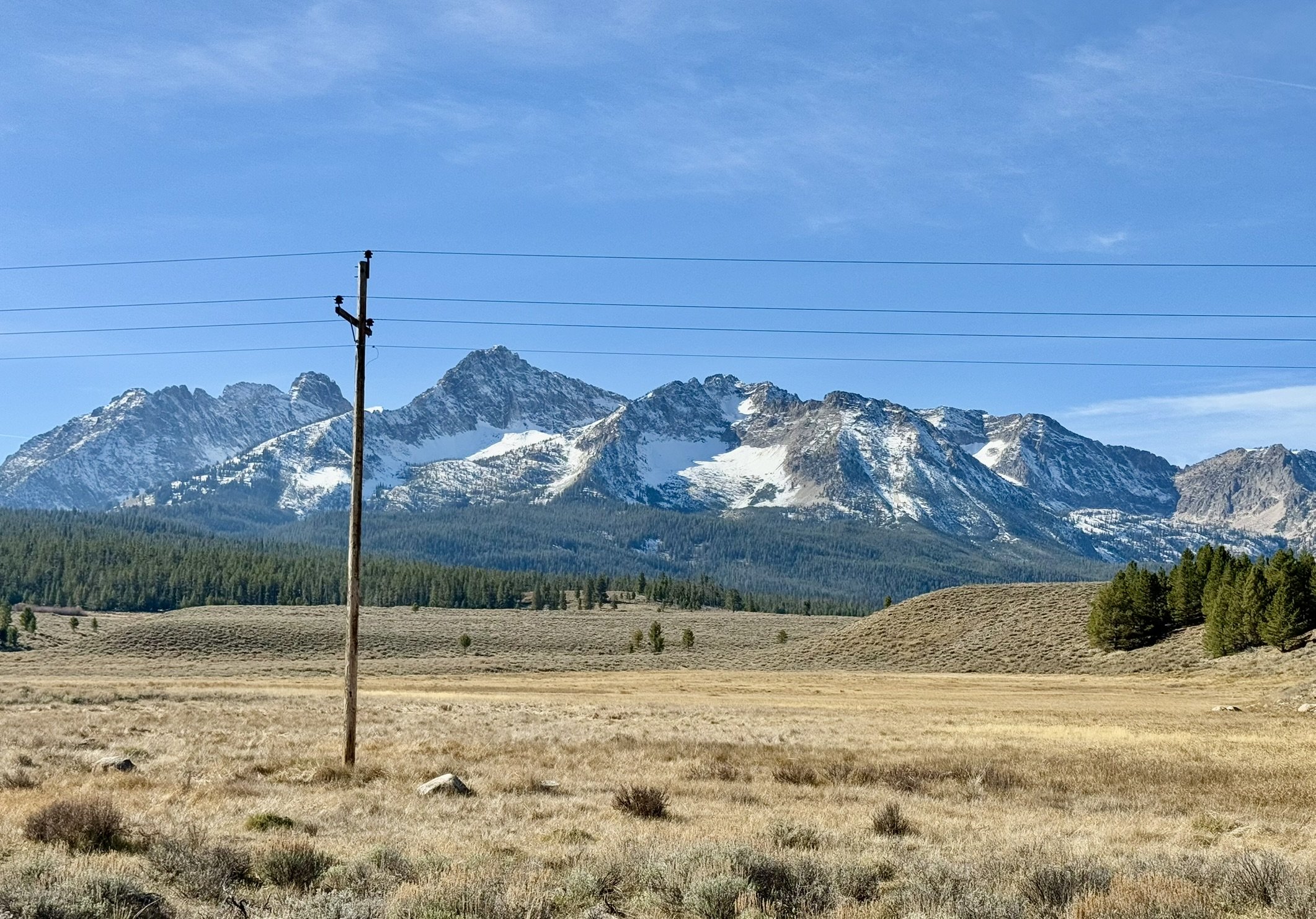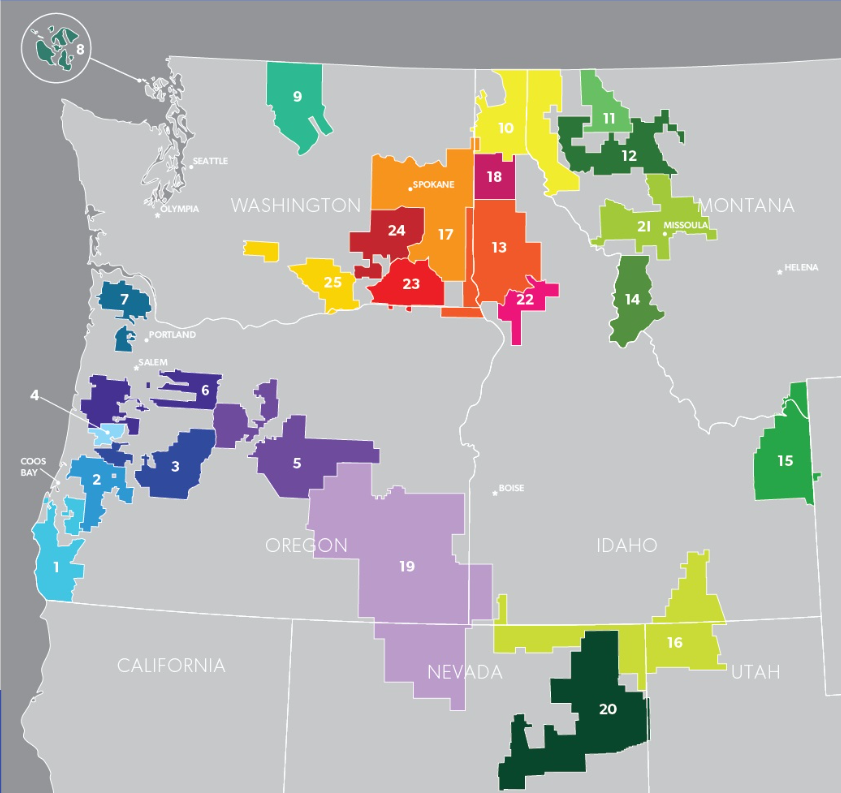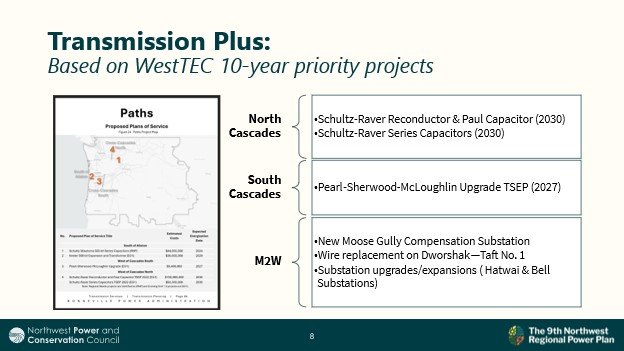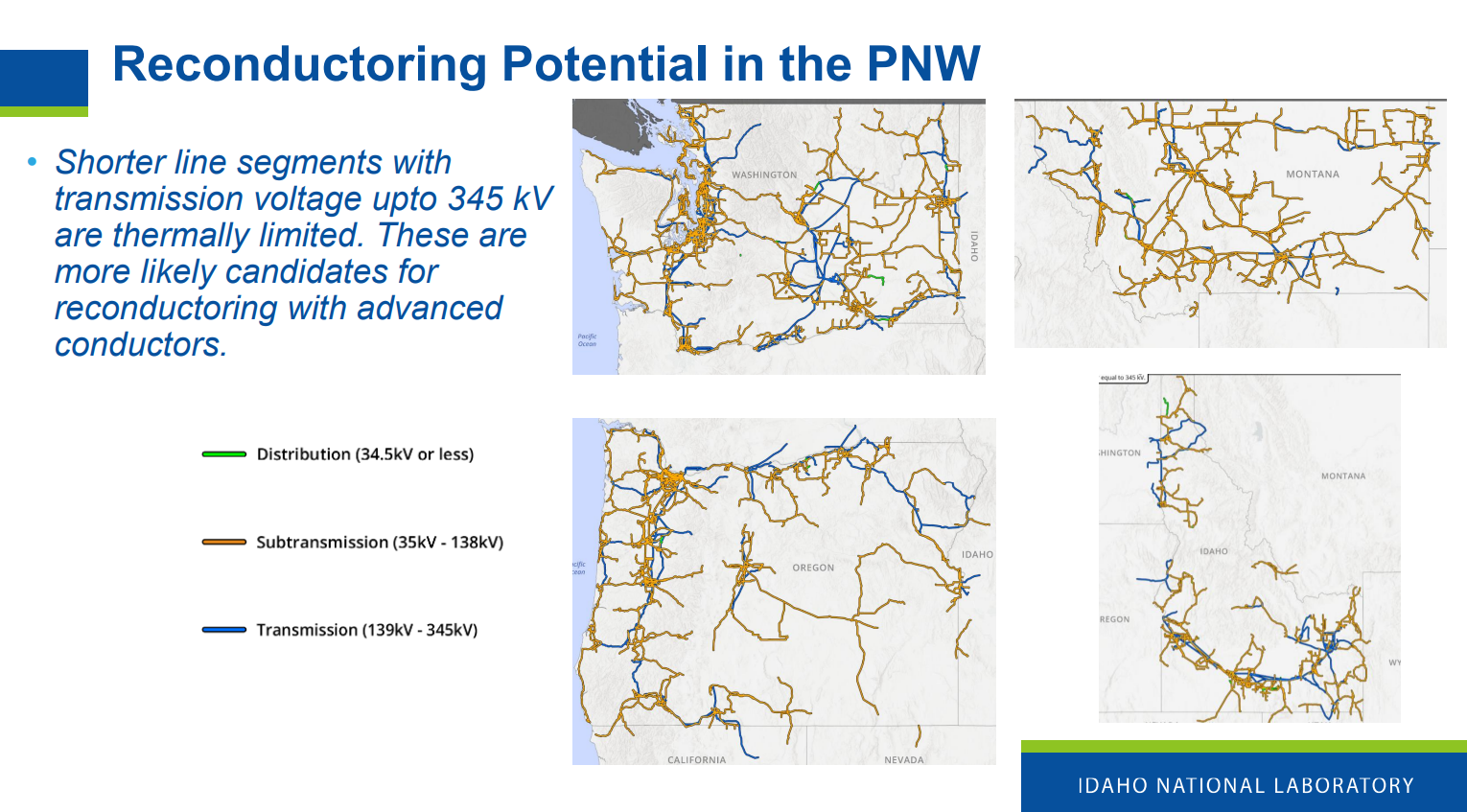PNGC Power briefs Council on resource planning; Idaho Power, INL discuss grid enhancing technologies
Advanced reconductoring upgrades outdated or aging transmission infrastructure with newer, modern technologies
- October 29, 2025
- Peter Jensen

Electric cooperatives serving rural communities in the Pacific Northwest are grappling with projected future gaps between forecasted load growth and resources to meet those energy needs, according to a presentation the Council received at its October meeting by PNGC Power. PNGC is owned by 25 electric distribution cooperative utilities with service territories in seven western states, including Washington, Idaho, Oregon, and Montana.
The Council also listened to a presentation by an expert with Idaho National Laboratory and engineers from Idaho Power about their work on expanding the capacity of existing transmission systems through grid-enhancing technologies and advanced reconductoring. The presentation was intended to spark discussion about how these grid solutions could fit in the context of the Council’s forthcoming 20-year power plan for the Northwest, called the Ninth Plan.
PNGC preparing for rural communities’ future energy needs
President and CEO Jessica Matlock discussed PNGC’s two-phased approach to meeting future energy demand, along with its recent dramatic growth as a transmission and generation cooperative that serves as a federally authorized joint-operating entity in the Northwest. (Read presentation | watch video)
PNGC recently doubled in size in one year and has capped its membership at 25. PNGC was originally formed during energy crunches in the 1970s to pool buying power and help craft resource solutions that fit rural communities in the Northwest, Matlock said. Historically PNGC’s members sourced all their power from Bonneville Power Administration.
Looking to the future, she noted that member cooperatives are forecasting load growth above what BPA has agreed to sell at its Tier 1 rates under the future contracts. For loads that are above the allocated Tier 1 amount, BPA will also supply power at a Tier 2 rate, which historically has been market-based power. PNGC is aiming to complement and augment BPA’s system by developing new power-generating resources, Matlock said.

This includes an energy gap of 240 aMW in 2029 that grows to 565 aMW by 2044 above the allocation of power sold at Tier 1 rates, as well as a capacity gap for winter peaks of 480 MW in 2029 that grows to 960 MW by 2044. The first phase of PNGC’s resource strategy secured 307 MW of nonfederal wind, solar, and market purchases, while the second phase is targeting baseload projects post-2028. Matlock said the second phase includes developing a new natural gas plant in Northern Idaho.
The forecasted load growth is due to a variety of factors and does not include future energy needs of data centers and artificial intelligence. Matlock cited economic and population growth, as well as electrification, as sources of future demand in PNGC members’ communities. While the Western Resource Adequacy Program strives to bolster resource adequacy planning and compliance in the West, Matlock said its obligations will intensify competition for firm resources. WRAP compliance and shifting to participation in the two emerging day-ahead markets in the West, Southwest Power Pool’s Markets+ and CAISO’s EDAM, are among the issues PNGC members are grappling with, Matlock said.
“How are we going to meet this gap and be resource adequacy compliant in the Northwest?” Matlock said. “That’s our biggest challenge. We’re going to try to build our own so we can provide price certainty to our members.”
The Council’s Ninth Power Plan will complement PNGC’s resource planning. The Ninth Plan will cover the years 2027-2046. The Council’s power plans offer cost-effective strategies and regional-level insights for meeting energy demand in rural as well as urban areas of the Northwest. This fall and into the winter of 2026, the Council will be using computer modeling to evaluate supply and demand-side resource options, and then analyze how and whether they will meet the energy needs of the regional power grid over the next 20 years.
The Council recently upgraded its computer modeling capabilities to analyze future load growth in the Northwest, and to evaluate resource solutions. This includes a deeper understanding of future energy needs that gets down to hourly, daily, monthly, and annual levels of demand across the next 20 years, including checking how the power system would perform during a future heatwave or winter storm and analyzing precisely what it needs during those moments of peak demand. The Council can also now break out energy demand and resource planning by zones, to better differentiate between the future energy needs of urban areas and those of rural communities.
This is a new element for the Council’s power planning. The Council invites and encourages engagement and participation from across its four-state region as it continues to develop the Ninth Power Plan’s cost-effective resource strategy. Public engagement is a crucial component to ensuring that the Ninth Plan’s resource strategy meets the needs of all communities in the Pacific Northwest.
Grid enhancing technologies, advanced reconductoring & dynamic line ratings
Idaho Power engineers Phil Anderson and Erik Schellenberg were joined by Jake P. Gentle, Senior Technical Manager for Grid Reliability with Idaho National Lab, in leading the presentation about grid enhancing technologies, including advanced reconductoring and dynamic line ratings. (Read presentation | watch video)
Council Resources Policy Analyst Annika Roberts and Resource Analyst Joe Walderman explained how the Power Division is treating these technologies and techniques for the Ninth Plan. These measures can increase the capacity, efficiency, reliability or safety of existing transmission lines and reduce congestion. They can be deployed quicker and more cheaply than building new transmission lines.
This can help the Northwest wring more use out of the existing system in the short term, while delaying or displacing the need for larger infrastructure projects. These measures won’t solve all of the region’s capacity problems, or entirely defer the need for new transmission, but could help span the gap in the interim, while regional transmission system expansion planning and buildout progresses over the next several years.
To help craft the Ninth Plan’s cost-effective resource strategy, the Power Division will be using scenario modeling to analyze different paces of resource and transmission development in the Northwest. This scenario modeling will leverage the Western Transmission Expansion Coalition’s ongoing planning, including its recently identified 10-year priority projects that features several examples of grid-enhancing technologies and advanced reconductoring.

Gentle provided an expert’s perspective on grid enhancing technologies, including advanced reconductoring among several other measures, and how utilities across the U.S. can best employ them. Anderson and Schellenberg spoke to Idaho Power’s experience with dynamic line rating and shared details on their current grant project with the Department of Energy.
“This is not a new endeavor for the region,” Gentle explained.
Many transmission lines in the U.S. were built decades ago, if not over a century ago, and still use infrastructure from those eras to carry and transmit electricity – including the wires themselves. Advanced reconductoring upgrades outdated or aging transmission infrastructure with newer, modern technologies. Gentle cited examples of nine advanced reconductoring projects that have been deployed in the Northwest since 2004, and how they’ve expanded capacity, helped bring renewable energy online, or addressed thermal overloads, among other benefits.
He showed maps INL has produced analyzing the potential for advanced reconductoring in Oregon, Idaho, Washington, and Montana, noting that shorter line segments up to 345 kilovolts are best suited for upgrades with advanced conductors.

Anderson and Schellenberg spoke to Idaho Power’s work on an experimental project with dynamic line rating. Utilities can achieve dynamic line ratings by installing technologies that provide real-time calculations of a transmission line’s thermal capacity, which is based on local weather, wind, and temperatures conditions. More electrical current can flow through lines depending on temperatures, solar radiation, and wind speeds.
Idaho Power worked with INL and Boise-based contractor Pitch Aeronautics on the project, which used transmission lines near the town of Hagerman above the Snake River. They installed 47 weather stations and created a model that calculated real-time ratings for the lines. The results showed that capacity of the selected lines was much higher in the springtime, but that was not true across the seasons. On a hot day in the summer, for example, the rating could be lower, Anderson and Schellenberg reported. The dynamic lines consistently had higher ratings in the late afternoons and evenings. The project will move to a demonstration phase next.



